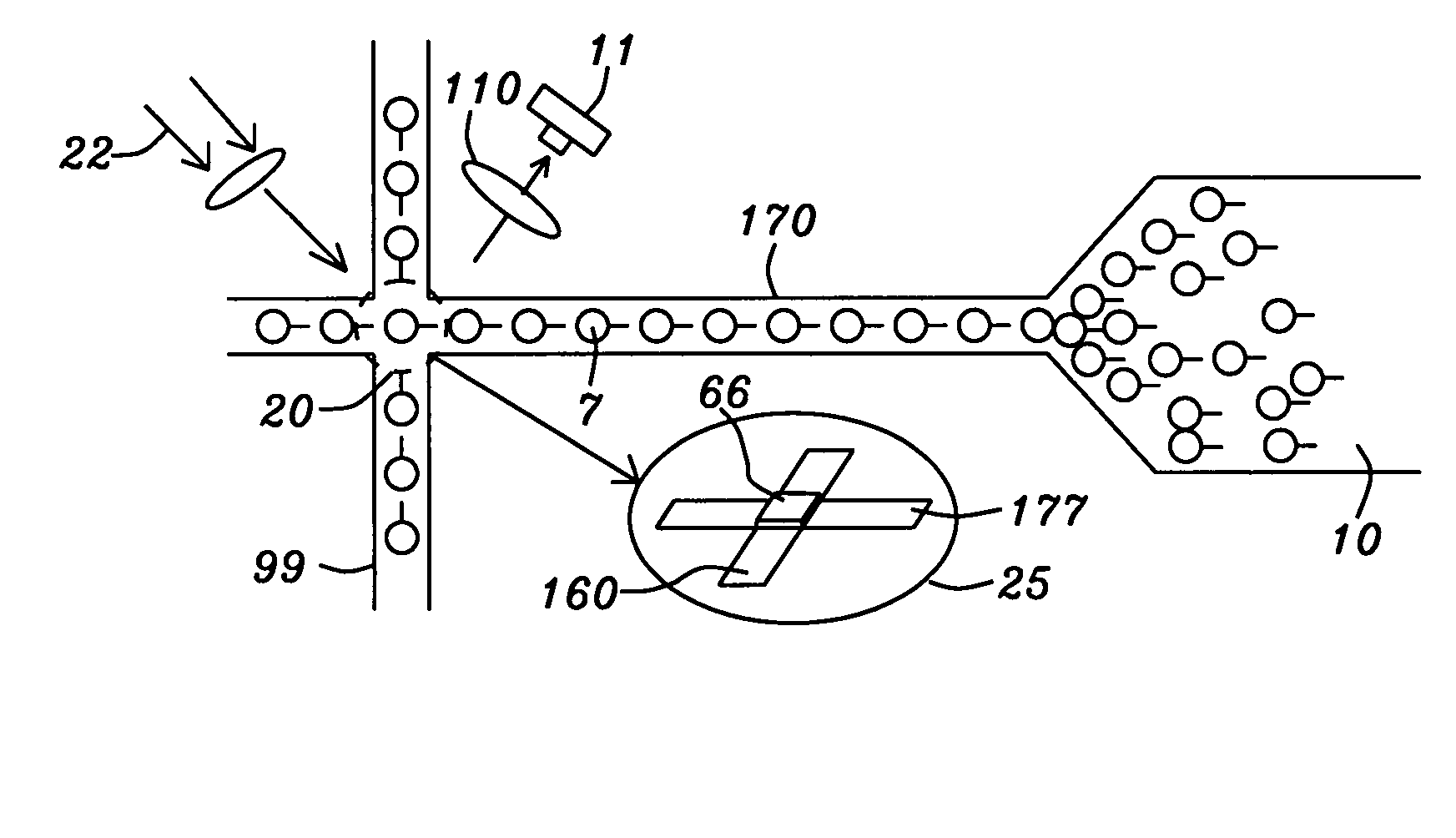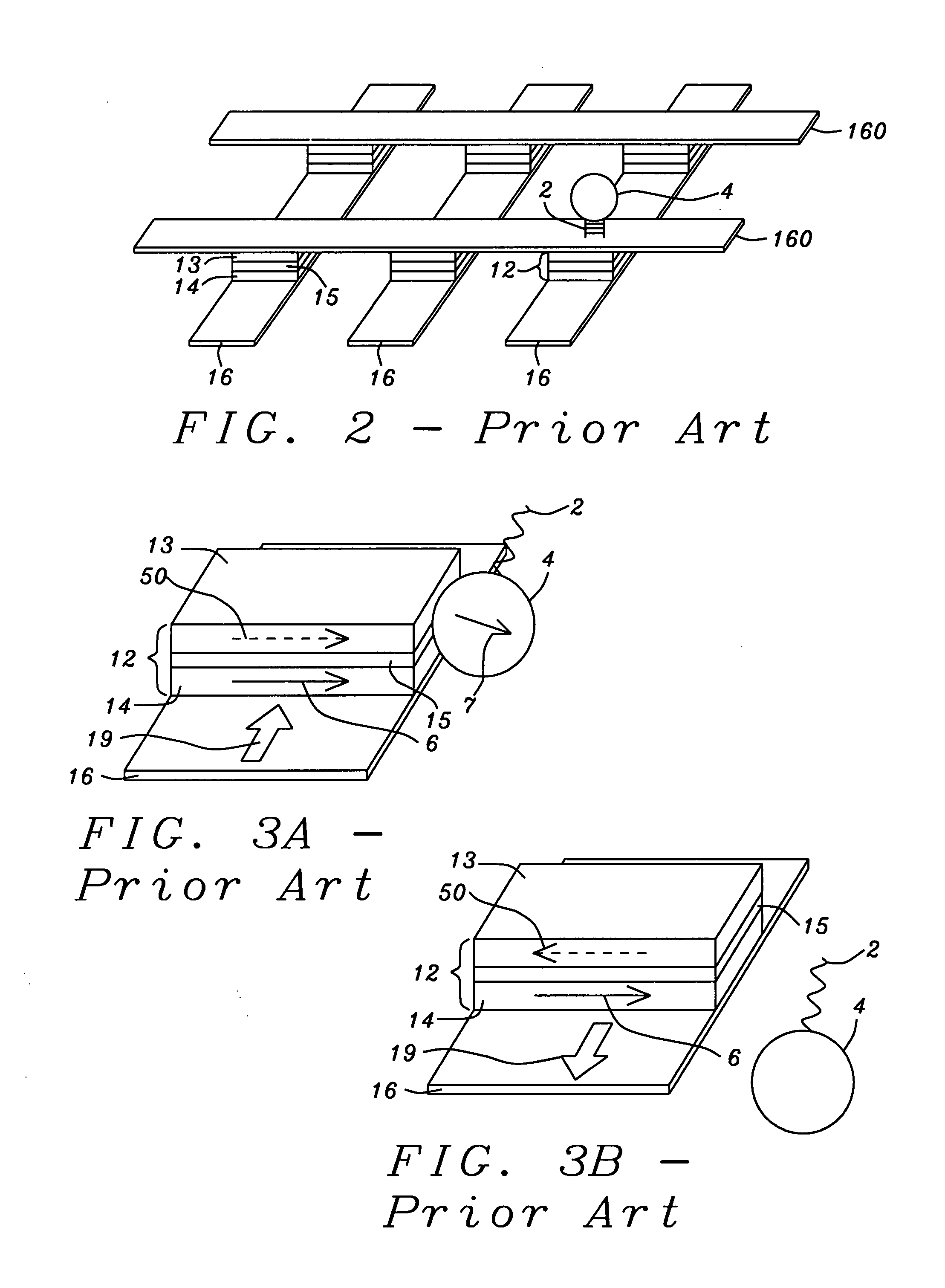Guided transport of magnetically labeled biological molecules and cells
a technology of biological molecules and magnetic labels, applied in the direction of high-speed magnetic separators, solid separation, chemistry apparatus and processes, etc., can solve the problems of inability to separate each individual label or molecule, the new method is theoretically slower, and the overall oriented extraction technique is incapable of producing single-molecule detections, etc., to achieve better signal-to-background noise ratio, reduce the complexity of biological preparation, and eliminate diffraction effects and strong background noise
- Summary
- Abstract
- Description
- Claims
- Application Information
AI Technical Summary
Benefits of technology
Problems solved by technology
Method used
Image
Examples
embodiment 1a
[0086]The trapping structure (also denoted a “device”), shown schematically in FIG. 12A, is formed beneath a protection layer that is not shown here. The term“trapping” as used herein refers to the capture and holding of a magnetized label in a substantially fixed position.
[0087]The magnetic labels are attracted by the magnetic fields of the trapping structure and they move against the protection layer's top surface which can be the bottom surface of a confinement device as will be illustrated below. The labels are transported along the top of the protection layer along a Direction 2 as indicated on the Cartesian coordinate system in the figure. The trapping structure is a multilayered device that includes four parts, a magnetic free layer (13), a non-magnetic spacer layer (15), a magnetic pinned layer (14) and a current conduction path (16) that can carry current (19) in either direction along Direction 1 as shown by the double-headed arrow. Free layer (13) magnetization can be in ...
embodiment 1b
[0090]Referring to FIG. 12B, there is shown schematically a device that is the same as that in FIG. 12A except that the adjacent current carrying line ((16) in FIG. 12A) is absent and the current (19) is carried by the interlayer (15).
embodiment 1c
[0091]Referring to FIG. 12C, there is again shown schematically a trapping structure that would be formed beneath a protection layer. The magnetic labels would be attracted against the protective layer by the trapping structure beneath the layer. The trapping structure includes two parts, a single magnetic layer (13) and a current conduction path (16). The natural or normal magnetization of layer (13) is maintained by an internal field along the in-plane Direction 1 that is perpendicular to Direction 2. The internal field of layer (13) can be from any one of, or a combination of crystalline anisotropy, shape anisotropy and stress-induced anisotropy. The internal field in layer (13) can also be due to an exchange coupling with an adjacent antiferromagnetic layer (not shown) or from a SAF structure (not shown) as discussed above. Electric current (19) flows within current carrying layer (16) along Direction 1 and generates a magnetic field to induce a Direction 2 magnetization compone...
PUM
 Login to View More
Login to View More Abstract
Description
Claims
Application Information
 Login to View More
Login to View More - R&D
- Intellectual Property
- Life Sciences
- Materials
- Tech Scout
- Unparalleled Data Quality
- Higher Quality Content
- 60% Fewer Hallucinations
Browse by: Latest US Patents, China's latest patents, Technical Efficacy Thesaurus, Application Domain, Technology Topic, Popular Technical Reports.
© 2025 PatSnap. All rights reserved.Legal|Privacy policy|Modern Slavery Act Transparency Statement|Sitemap|About US| Contact US: help@patsnap.com



